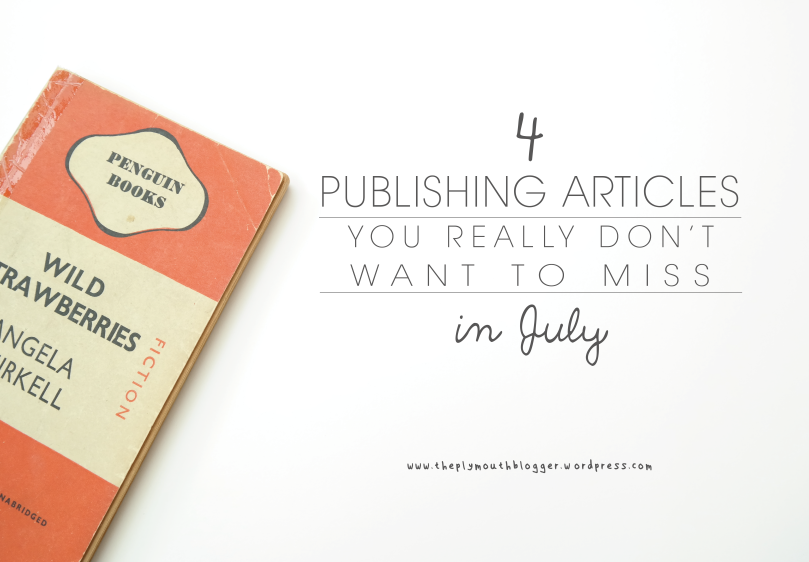September is here! It’s been another busy month in publishing. Whilst we may not be thinking about Christmas just yet, the world of publishing is busy getting ready for the winter market, as well as always developing new job roles and changing all the time. To let you catch your breath, I’ve complied 5 online articles that offer a snapshot of the publishing news from this month. Enjoy!
1. Skills Gaps in the Publishing Industry | bookmachine.org
This is a two-parter: two interviews identifying what skills are currently craved in publishing. The interviews, the first with Relations Executive Seonaid MacLeod (The Publisher’s Association) and the second with Resourcing Manager Stephanie Hall (HarperCollins), should be essential reading fodder for any publishing hopeful. Insights into publishing from industry professionals are incredibly valuable, but these articles go that one step further by offering newcomers an idea of what skills to develop to meet the needs of an continually flourishing business. The ladies tackle questions like “How easy do you think it is for publishing professionals to gain new skills and change roles?”and “What do you think are the best ways to gain new expertise?”. Want the answers? Click the link!
2. Everything You Need to Know About Publishing Industry Etiquette | writersedit.com
As a publisher, it can be very important to understand the writer’s perspective. Conversely, writers need to be clued up about publishing etiquette. This article is a great meet in the middle, useful for writers looking to get published and also for publishers-in-training, many of whom are learning about client management. This article, by Hannah Macauley-Gierhart, supplies us with 7 top tips for publishing success and impeccable client/business relationships, interspersed with nuggets of advice from leading houses such as Penguin Random House. Essential reading for anyone looking to go into account management or similar.

3. Rise of the Engagement Editor | mediashift.org
It can be difficult when you first step out into the industry to get your head around the sheer number of job roles and responsibilities publishing encompasses. An article from Media Shift caught my eye this month all about a role I’d never heard of before – the engagement editor. All about coordinating a business’s digital strategies, the engagement editor is in charge of all things to do with user interfaces and community interactions. A great read if you’re just learning about the mind boggling amount of job roles on offer for publishing hopefuls and if you’re interested in the future of digital media and it’s audience.
4. How Does Networking Help? | thebookseller.com
Networking – you may already have heard people talking about how important it can be for your career. But how exactly should we go about it, and how can we actively make it work for us? Written by fellow English graduate (now the chair of the Society of Young Publishers) Anna Cunnane, this article foregrounds the importance of letting others in the industry know how well they think they can work with you. In her words, networking “will help to build a network of people that can vouch for you and tip you off when the next job is coming up, and to consistently prove yourself to be engaged and likeable by showing up to networking events” and she leaves us with some tips to help us make an impact. Awesome!
5. The State of US Illustrated Books | publishingperspectives.com

This article comes as a four-part series on the illustrated book publishing climate in the US (read them all here, here, here and here). This news is nothing groundbreaking and perhaps not useful for everyone (or in fact anyone haha!)– but I just love illustrated books (I even own the Wes Anderson filmography book, above). If this is an area that interests you too, this is a pretty comprehensive guide to what is going on right at this moment. The series, released all throughout August, touches on the digital world, e-illustration-Books, and how the consumer may have changed as well as its general current state. Lots of interesting things going on in this area, that’s for sure!
***
Which article did you find most useful/interesting? And did you find anything interesting out this month that I would be stupid to miss? Let me know!




